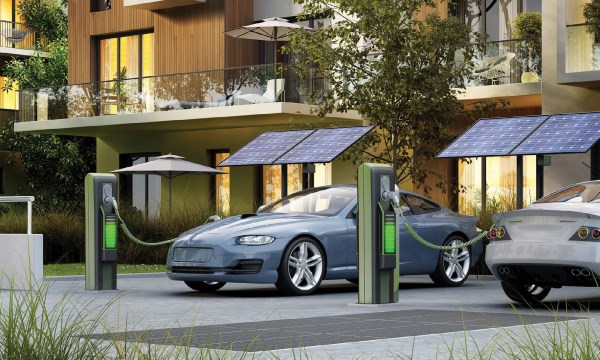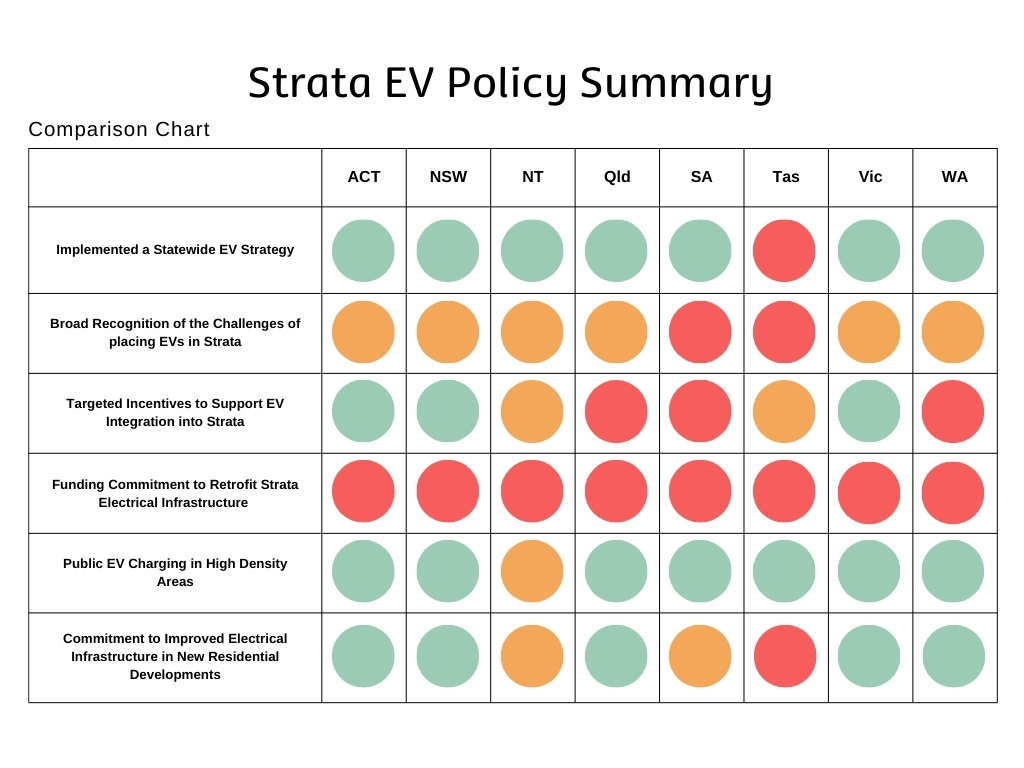SCA’s Electric Vehicle (EV) Activity Report

Over the past year, the integration of EVs and EV charging into strata has been one of SCA’s core priorities nationally, largely due to the increase in demand for EVs that we have observed sweeping across the country. Figures released in December 2022, showed that electric vehicle sales increased by a staggering 549 per cent, comparing 2021 sales figures to 2022.
With one in five Australians living in strata, the number of electric vehicles in strata is surging, which brings with it a raft of associated complexities and challenges.
Recognising the scale of the impact on the industry and consumers that EV integration will have over the coming years, SCA has been on the front foot and has engaged in four main initiatives.
The first initiative was the formation of a national strata EV taskforce, named the Strata Electric Vehicle Infrastructure Taskforce (SEVIT). The goal of SEVIT was to bring together experienced members, consultants, managers and suppliers involved in the energy sector. Their expertise will provide input and insight into the emergence of electric vehicles and electric vehicle charging, and its impact on strata titled complexes.
The second initiative has been to proactively reach out to government, stakeholders and the media and bring them original research specific to the strata sector. One of the core outputs of SCA’s SEVIT last year was the formation of a series of reports, aiming to be on the front foot to guide managers, service providers, consumers and government towards better education and improved outcomes in this complex policy area. Due to the necessity of understanding the current level of consideration for issues at a state level (where most policy and legislation will be implemented), the report was determined to be released in 2 Phases.
The third initiative has been to become a key stakeholder in any existing inquiries, consultations or projects involving EV integration into strata buildings. Through taskforce consultation, and in cooperation with each state and territory chapter gathering specific on-the-ground information, we have been able to feed into existing processes already in most jurisdictions through submissions, meetings and disseminating reports. This notably includes working closely with the National Electric Vehicle Strategy (NEVS) team on their latest consultation, higlighting the specific challenges that EV uptake will have on EV owners and people who live in strata, as part of the overall strategy.
The fourth initiative is to provide and release accessible and timely resources for members, strata committees and external parties where possible to understand the complexities involved in EV integration, the options, and some of the more common issues.
SCA’s Phase 1: State of Play Report
SCA’s Phase 1: State of Play Report was to first act as a baseline layout for states’ support for the intergration of EVs into strata, analysing through investigation of statewide EV strategies and commitments the level of recognition of strata as a core component.
By first gaining an understanding of the strengths and weaknesses of each jurisdiction’s EV strategy in relation to strata, SCA is aiming to further drive the change necessary to ensure that one of Australia’s largest residential markets is adequately supported.
The report found that although there are differing levels of recognition and support being provided in each state and terrioty across Australia, significant gaps in support are still prevalent. Notably, funding commitments to retrofit strata electrical infrastructure in exisiting buildings is currently not in place in any juristiction across Australia.
Phase 1 Report Release Campaign
Upon the release of the report in December 2022, SCA conducted a campaign to engage media, government, and industry, seeking to push the agenda forward on the issue of EVs in strata across all mediums.
Government Engagement:
SCA successfully obtained meetings to brief a number of relevant portfolios on the release of the report, across several jurisdictions across Australia. These meetings provided a crucial opportunity to discuss how different governmental departments are addressing the issue of increasing demand and supply of EVs, and where policy to address where strata fits in the mix. The meetings included the office of Minister Pearson in Victoria, the office of Mr Jihad Dib MP in the NSW opposition, and Minister Rattenbury in the ACT to name a few.
Strata EV Policy Summary
Comparison Chart

The strong response from government reinforces the necessity for SCA to assist in the development of governmental strategies for strata moving forward.
Media
SCA also garnered a significant amount of media attention surrounding the release of the report. This included featuring comments in the Australian Financial Review article title “The hidden threat of EVs to older apartments” by senior reporter Michael Bleby, as well as a number of industry publications, such as The Real Estate Conversation.
SCA’s Phase 2: Challenges Report
SCA is planning on the release of the second of the two reports, SCA’s Phase 2: Challenges Report, in the first quarter of 2023. The Phase 2 report will be a comprehensive analysis of the specific issues that the integration of EVs into strata will create, utilising the primary knowledge of our expert members and the industry as a whole.
A report of this variety is the first of its kind, and SCA hopes that it may be utilised by everyone from OCs to government departments to provide information and answers surrounding the multitude of issues that strata communities may face as a result of EV integration.
Some of the most pertinent issues relating to the integration of EVs and EV charging into strata that SCA will be addressing in this phase 2 report will include:
Cost: Most of Australia’s existing strata building stock does not possess the required electrical infrastructure to support EV charging for all residents within the building. This includes wiring, metering, distribution boards etc. (this is especially true for older buildings, for which there is a high portion of within strata). The installation of this infrastructure is extremely cost prohibitive, and can cost upwards of $100,000 prior to the installation of a single charger.
Equity Issues: Whilst we can observe the growing demand and proportion of EVs in Australia, they only represent a small percentage of Australia’s total vehicle stock. As OCs operate in a democratised system, it is important to consider that those who do not currently own an EV, or plan to own an EV in the time they reside within their current strata residence, are far less likely to agree to pay for the installation of EV infrastructure. Similarly, OCs may turn to blocking the installation of single charging units by individual owners, as it will result in some lot owners deriving the privilege of personal EV chargers until the grid capacity of the scheme is full.
Information Gaps: Owners (and strata managers) may not necessarily be aware of the issues associated with the implementation of EV charging into strata, and how complex the implications of the installation are. SCA believes that it is crucial that owners, residents and strata managers have access to appropriate information surrounding the needs of their specific complex and the requirements of their scheme. For example, owners may not need an expensive and overpowered 400kwph EV charger, when a 7kwph AC charger may be all that is required.
Fire Safety: We know that electric vehicles (in comparison to traditional automobiles) pose a far higher fire risk. Although it appears that fire incidents are rare, due to the presence of lithium-ion batteries in many electric vehicles, electric vehicle fire incidents tend to result in stronger and more resilient flames. These resilient fires become far more dangerous when considering the location of parking structures within strata schemes, which are often underground or in difficult to access locations.
Please keep a look out for the report release in March this year, as well as content in member newsletters, Inside Strata online, on our social media channels and in the media as we release resources, reports and submissions and drive towards greater outcomes for electric vehicles in strata.
View Comments
(0)